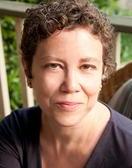
Today, we consider a question I often hear from religious leaders:
- Will interfaith families still choose "both" if our traditional religious institutions become more welcoming and inclusive?
The unspoken corollary seems to be:
- Can I ignore this "being both" mishegas? It's not really statistically significant, is it?
This question seems particularly relevant as the 10th anniversary of Being Both: Embracing Two Religions in One Interfaith Family approaches. Approaching the question from a Jewish perspective (which is how many people seem to approach the question), we benefit from the fact that Jewish organizations have spent a lot of time and resources producing data on Jewish demographics. At the Berman Jewish Data Bank, you can peruse the local community studies from cities and regions across the country. Recently, I spent some time pulling out the relevant statistic from the most recent studies, to try to understand how many interfaith couples are choosing to raise children with interfaith education, or "Jewish and another religion."
And, indeed, a significant percentage of interfaith couples are still choosing this pathway.
How Married Interfaith Couples with One Jewish Partner are Raising ChildrenThe variation certainly relates to the different geographic settings, but also to different ways that samples were collected and questions asked. Notably, in Louisville KY, birthplace of my Jewish grandmother, more interfaith families were found to be raising children with Judaism and another religion (27%), than with Judaism alone (24%). In other recent studies, the percentage raising children with both religions was smaller, but still significant.
In LA, the researchers broke the interfaith families into two categories: Jews married to people claiming another religion, and Jews married to people of no religion. Not surprisingly, a much larger percentage of the partners of no religion were willing to raise "just Jewish" children. In LA alone, some 12,000 children are being raised Jewish and another religion.
The LA study was also notable in devoting a brief section to actually considering the question, "What does it mean when parents describe their children as being both Jewish and another religion?" But the response to the question is very brief. The researchers simply note that in this "both" group, "Few households attend any religious services regularly, whether Jewish or non-Jewish services." The implication is that "both" is a synonym for "neither." But as the person who has probably spent the most time observing and researching these families, that is simply false. Using service attendance as the primary indicator of religious or spiritual depth is archaic in 2022, when a profusion of online, DIY, and home-based religious and spiritual practices are flourishing, inside and outside the Jewish world.
But the bottom line here is that every recent Jewish communal study documents that the choice to give interfaith children an interfaith education cannot be ignored. And, as we will explore, there is every reason to believe that these studies undercounted the "being both" families.
Why Jewish Communal Studies Yield Skewed Data on Interfaith Families
The main issue with relying on these studies to document interfaith family life is that all of them were funded by Jewish foundations or organizations, ensuring a Jewish lens. For the most part, only the Jewish partners were interviewed. The religious identities of their partners are not even categorized (Catholic? Protestant? Hindu? Unitarian Universalist?).
A primary goal of most of these funders is to figure out how to increase the number of families "doing Jewish." There is a reluctance to come to terms with what draws family to doing both. And thus there is no insight into what multiple religious practice looks like in these families-what it means, why it is valuable. Ironically, asking these questions could only help those who seek to increase Jewish engagement.
The most limiting factor in using these studies to think about "doing both, being both" families is the sampling. In order to make sure to reach as many Jews as possible, these studies used methods including identifying "Jewish" surnames, and outreach through Jewish organizations such as synagogues and Jewish schools. Obviously, these methods are less likely to reach interfaith families with Irish or South Asian surnames. And they are less likely to reach "doing both" families that have given up on Jewish institutions that keep excluding them, or who are just more interested in online and home-based practices, or who thrive on forming their own interfaith communities. None of these families are going to pop up on Jewish organizational lists.
Furthermore, these studies do not ask, "Why are you doing both?" So they provide no insight into whether or not these couples wanted to engage more deeply, and could not find welcoming communities. There is no consideration of the idea that these families may not feel a need to affiliate with traditional religious institutions for spiritual fulfillment, or even for community support.
It is clear that interfaith families doing both or being both have been, and are going to be, undercounted and misunderstood in these Jewish communal studies.
Nevertheless, even these Jewish communal studies show that we're here, we're demographically significant, and we're not going anywhere.
Journalist Susan Katz Miller is an interfaith families speaker, consultant, and coach, and author of Being Both: Embracing Two Religions in One Interfaith Family (2015), and The Interfaith Family Journal (2019). Follow her on twitter @susankatzmiller.
